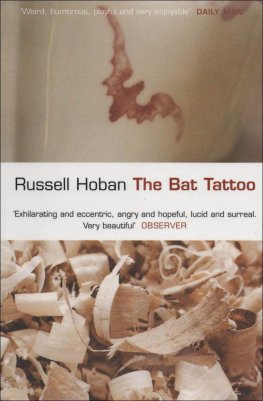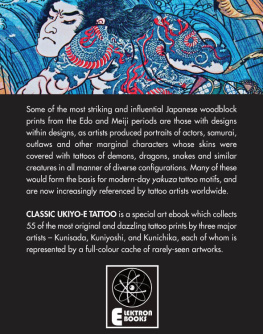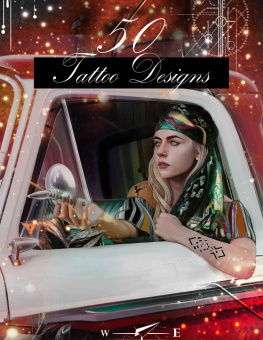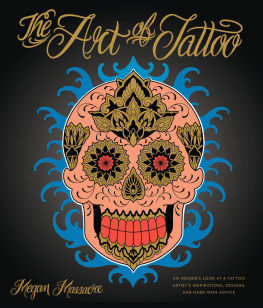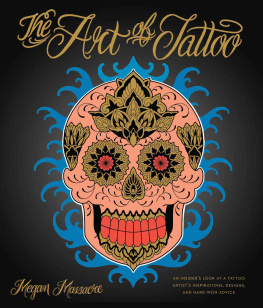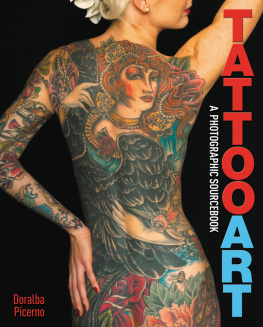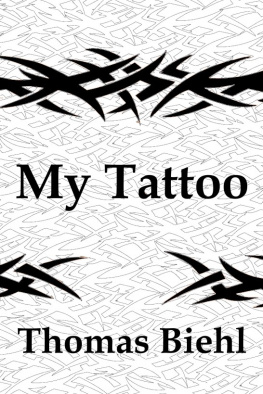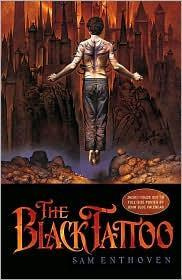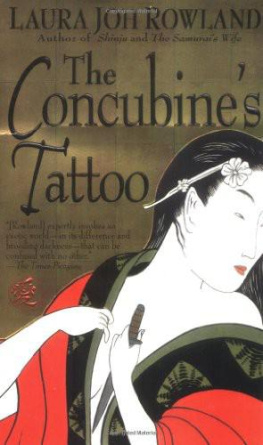Thank you for purchasing this Artist Network eBook.
Sign up for our newsletter and receive special offers, access to free content, and information on the latest new releases and must-have art resources! Plus, receive a coupon code to use on your first purchase from NorthLightShop.com for signing up.
or visit us online to sign up at
http://artistsnetwork.com/ebook-promo
Contents
CHAPTER 1
CHAPTER TWO
CHAPTER 3
CHAPTER 4
Introduction
I began tattooing in 1979 and it became my career in the fall of 1984, right after I graduated from the Art Institute of Pittsburgh. I have drawn all my life and was inspired by my mother in that direction at a very early age. I do remember asking my mother what a tattoo was as a child and she responded Dont ever get one of those, youll get blood poisoning! Well, Ive gotten way more than one of those and still dont have blood poisoning! Fortunately the health aspects of tattooing have much improved through the passage of time, and those risks are way less than they were in days gone by. Now most health departments require that tattoo artists get blood-borne pathogen training, along with having strict guidelines about sterilization and sanitation that every tattoo shop has to follow.
Tattooing has evolved a great deal since Ive been involved with it. There are so many styles and trends that have come and gone, and some of the better ones have stayed. The language of tattoo design has expanded tremendously, which is one of many reasons why tattooing has become so popular. In the good old days of tattooing, the imagery was very limited. A lot of those standard designs, and the style they were tattooed in, is now referred to as American Traditional. Even when I first began tattooing in 1979, eagles, skulls, anchors, cartoon characters, werent part of a specific genre. They were just tattoos. Now there is American Traditional, Tribal, Black and Gray, Celtic, New School, Realistic, Biomechanical, Japanese, and who knows what else. With the expanded design options, more people can relate to tattooing, and find, or create, a design that resonates with them. Therefore the demographic of tattooing has expanded. With unlimited design choices, the tattoo clientele has also become unlimited. Gone are the days of pointing at a design on the wall and saying, Ill take that one! Custom tattooing is now the norm.
Anything and everything can be adapted as tattoo imagery. But whatever it is, there are certain principles that always apply. Doing artwork as a tattoo on a human body is different than working in any other medium. There is no defined border to your canvas per se. And the surface youre working on varies inch by inch as far as contour, and even texture. Its very important to consider the placement of the tattoo, the flow of the art with the body, even the colors and how theyll look on the skin youre working with. How will age affect the look of the tattoo? How detailed should the design be? Is the person in the sun often? Theres a lot to consider when applying art to skin.
In this book, I hope to help you learn to create masterful tattoo-oriented designs with the knowledge Ive gained with thirty plus years of tattooing. I wont be going into how to actually apply a tattoo. That is way too involved a process to cover in any book. To properly learn to apply tattoos, you would need to seek an apprenticeship with a qualified tattoo artist who is willing to spend the time needed to train you. My goal with this book is to help you to better understand the art of tattoo and how to apply the principles of tattoo design to creating your own unique tattoo art, and enjoy doing so. Have fun with itI do every day!
What Youll Need
The materials youll need to get started will include various pencils, a kneaded eraser and tracing paper. Youll also need colored pencils, cold-pressed illustration board, watercolors and/or liquid acrylics, permanent markers and paint brushes. Its also a plus if you have a drawing table or a drawing board, but these arent essential and you can improvise if need be.
Drawing Tools
Fine, medium and brush permanent markers; a kneaded eraser; 2B, 4B and 6B pencils; and a 6B graphite stick.
PENCILS
A common 2B graphite pencil can be used for most applications. The softer the pencil is, the darker the line will be. Sometimes you may prefer a very soft pencil, like a 4B or a 6B if you want an even darker line. A soft pencil is also good for making a transfer sheet, which well cover in a later chapter. A soft graphite stick, like a 6B, works even better when making a transfer sheet as it will cover a greater area at one time.
ERASERS
A kneaded eraser is the type of eraser that artists generally use, as it doesnt make the dust that a pink eraser will. It is also more gentle on the surface youre drawing on, and wont damage it easily. You can use one for a long time because you simply knead it to clean it, which is another advantage.
MARKERS AND COLORED PENCILS
I use Faber Castel permanent markers for my black linework. I get them in fine, medium and brush tips. I find them easier to control than a brush or croquill pens for lining, but you can certainly use those too.
Good colored pencils that have a waxy texture really lay on tracing paper nicely and almost glow when applied properly. You can also do nice blends with them that mimic the shading techniques of tattooing. When done well, marker and colored pencil can look like a painting.
Liquid Acrylics
Liquid acrylic colors can be mixed, although they come in a wide variety of premixed colors.
PAINTS
Liquid watercolors work well for tattoo type artwork, and so do liquid acrylics. The advantage of watercolors is that they can be reanimated for some time by just using water to blend them out. The problem is that same attribute can work to your disadvantage if youre layering colors or trying to build up layers of paint as they can run together and get muddy. Make sure you get lightfast watercolors as some are not and fade out very quickly so all your time and effort will disappear!
Liquid acrylics have the advantage of staying put once theyre on the surface, but the disadvantage is not being able to be blended out after only a few seconds. You have to work very quickly with them. Another thing thats good about acrylics is that they can be layered up, and you can do aging techniques on top of them easily too. For these reasons I prefer acrylics over watercolors personally. But you should try both, and see what works best for you.


